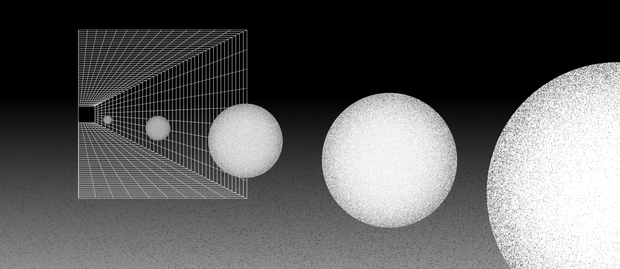
Since their inception, non-fungible tokens (NFTs) have gradually become widely accepted assets by both the general public and specialized institutions in various industries. Moreover, the valuable features and accessibility of art NFTs ensured their adoption in the art industry and revolutionized the way masterpieces are created, bought, sold, collected, stored, and showcased. As a result, they are exhibited not only on digital platforms like Digitised.Art but also at famous art events or museums dedicated specifically to art NFTs.
However, it hasn’t always been the same. Tokens started as just unknown technologies and had to face and overcome prejudice, as many perceived NFTs as temporary trends or even fraud to quickly raise money during the hype. In this article, we explore the journey of NFTs in detail, covering their initial creation, growing adoption, and eventual popularization of new digital assets among galleries and beyond. So, let’s delve into the road that made NFTs valuable assets, which even prominent art institutions like The British Museum leverage for their own advantage.
The Technological Genesis: NFT Proof of Ownership and the Digital Asset of Tomorrow
In 2014, Kevin McCoy and Anil Dash organized a hackathon dedicated to finding a solution that would enable creators and their representatives to enforce intellectual property rights in the digital realm. Utilizing NameCoin, one of the earliest blockchains in the market, they found a way to record a looped video on its ledger. Today, it’s generally accepted that McCoy and Anil Dash created the first non-fungible token in the world. However, at that time, the founders named their innovation “monetized graphics.”

However, only in 2017 did the general public and media become aware of NFTs’ existence. During that time, the Ethereum blockchain, with its broader and more accessible functionality, played a crucial role in popularizing and adopting tokens. Developed by programmers William Entriken, Dieter Shirley, Jacob Evans, and Nastassia Sachs, Ethereum allowed users to utilize programmable smart contracts to create assets with unique features and utility previously unimaginable in the realm of digital art. Moreover, this laid the foundation for standardized creation, immutable NFT artwork ownership, asset storage, and a diverse range of monetization options for galleries, digital artists, and collectors.
As a consequence of that simplified onboarding and overall accessibility of the platform, many famous NFT offerings that we still can to this day have risen on the Ethereum blockchain. Among them are well-known collections like CryptoPunks and collectible-based game CryptoKitties. No longer did developers, collectors, and creators have to rely on less approachable technologies. However, the major events that solidified the presence of NFTs in the market and drove the hype around the technology were yet to come.

Shift in the Art World: Owning Digital Art NFTs
Although adopting more flexible and accessible blockchain platforms like Ethereum allowed more creators to utilize the new technology, there were no significant events prior to 2021 that could encourage broader adoption of NFTs in the art industry. However, everything changed with the emergence of the COVID-19 global pandemic.
At that time, various art institutions sought ways to generate revenue, preserve their collections, and remain in demand amid the constantly worsening environment following the inability of visitors to attend galleries physically due to quarantines. As a result, the adoption of NFTs was accelerated, as galleries and museums also turned to this new technology. The interest in NFTs was also driven by the deals made during NFT auctions, where these assets were sold for thousands and even billions of dollars. One notable example is the purchase of Beeple’s artwork named 'The First 5000 Days' for $69 million, making an enormous impact on the hype surrounding NFTs and their adoption.

Marketplaces have also played a pivotal role in the popularization of NFTs, as they allowed individuals all across the globe to participate in NFT trading, therefore democratizing art collecting. On these web platforms, similar to virtual galleries, traders could browse or showcase NFT creations, participate in public bidding, and purchase NFTs directly from artists, galleries, or other collectors. Moreover, the usage of transparent proof of ownership and integrated smart contracts allowed all buyers and sellers to seamlessly track deals, verify the validity of assets, and purchase NFTs in a secure and convenient environment. Consequently, one of the most popular NFT marketplaces, called OpenSea, recorded a 786% increase in value to $13.3 billion in the second half of 2021.
However, as with any pioneering technology, the NFT industry also faced several challenges, including lack of regulation, unrestricted access to technologies, and the rise of fraudulent activity among both collectors and creators during the years of the pandemic. These challenges led some audiences to doubt the potential of NFT technology and even caused a backlash among the art community, further questioning the future of NFTs. Nonetheless, the community itself, without assistance from the regulatory entities, managed to mitigate most of the issues through rigorous curation and the emergence of specialized organizations dedicated to facilitating NFT acquisition.
The NFT Grand Stage: Opening the Doors of Galleries
Although NFT technology and its application are still in their infancy, compared to previous years, more and more organizations, businesses, and individuals have adopted these assets. Experts even anticipate the NFT market to reach USD 26.98 billion in 2023 and achieve a market value of USD 7390.8 million by 2028.
Moreover, all NFT enthusiasts can experience the growing influence of the industry and form the close bonds with galleries firsthand by visiting various exhibitions, expos, and events. These events take place almost every year, gathering thousands of people interested in the tokenization of art and serving as a source of inspiration. They provide opportunities for individuals and organizations to meet prominent industry leaders, participate in NFT history development, engage in social networking, and discover the trends of constantly growing areas. Therefore, it’s essential to keep on track of NFT events that take place.
Some even create real-life and virtual exhibitions dedicated solely to the art NFTs, providing visitors with experiences similar to traditional art installations, collecting, and appreciation. Among them are time-honored museums like The Centre Pompidou and Monnaie de Paris, as well as more contemporary ones like The B.20 Gallery and Async Gallery.
Ultimately, the growth and popularity of the NFT industry will depend on several factors, including general awareness about tokenization, proficiency in technological factors, further adoption of blockchain, and the development of proper regulation on a governmental level. Furthermore, integrating other Web 3.0 technologies or gamification of the experience through Metaverse can foster interest in virtual galleries and their NFT exhibitions even further.

To this day, the NFT industry has already undergone many challenges and achieved feats that allow non-fungible tokens to confidently take their place among other well-established digital assets. Nevertheless, there are yet to be many more to come if we as a community want to develop a more convenient, secure, and beneficial space for trading, collecting, and appreciating NFT artworks.
Join Digitised.Art to be in the ranks of NFT galleries or collectors that already experience the benefits of modern digital assets and stay at the forefront of future changes in art collecting.
Related articles



